#salisbury plain
Text

A scene from the very last Stonhenge Free Festival.
Salisbury Plain, England
1984
#vintage camping#campfire light#england#salisbury plain#camping#road trips#outdoor concert#stonehenge#festival
141 notes
·
View notes
Text
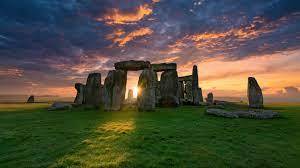
The summer solstice has dawned over Stonehenge for millennia.
#Stonehenge#Wiltshire#Salisbury Plain#English countryside#dawn#prehistoric#stone circle#summer solstice#sunrise#ancient Britain#Druidism#paganism#mystical#England
77 notes
·
View notes
Text



Catherine, Princess of Wales meets personnel on exercise during her visit to the Irish Guards on Salisbury Plain, on March 8, 2023 in Salisbury, England. The Princess of Wales visited the 1st Battalion Irish Guards for the first time since becoming Colonel to learn about work on the Salisbury Plain Training Area.
#kate middleton#catherine middleton#catherine elizabeth middleton#duchess of cambridge#catherine princess of wales#irish guards#salisbury plain#british army#royal visit#british royal family#royal family#camouflage
229 notes
·
View notes
Photo
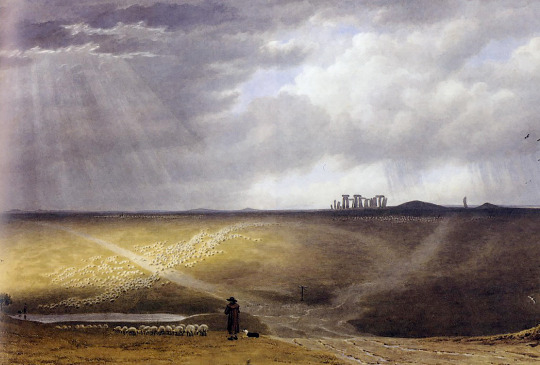
Joseph Mallord William Turner (UK 1775-1851)
1775-1851
Stonehenge - A Showery Day 1840
watercolour
150 notes
·
View notes
Text

Stonehenge, 2 May 1816 by Francis Etheridge
#francis etheridge#art#stonehenge#wiltshire#england#salisbury plain#megalithic#megalith#prehistoric#neolithic#structure#monument#bronze age#stones#british isles#britain#europe#european#clouds
125 notes
·
View notes
Text

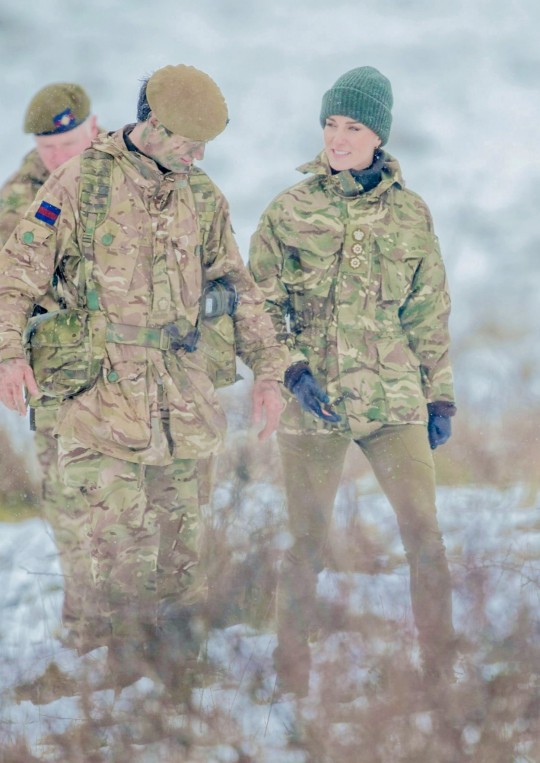

The Princess of Wales visits the 1st Battalion Irish Guards for the first time since becoming Colonel to learn about work on the Salisbury Plain Training Area in Salisbury, England -March 8th 2023.
#princess of wales#british royal family#england#2023#march 2023#1st battalion irish guards#salisbury plain#the wales#my edit
74 notes
·
View notes
Text
Stonehenge Autumn Equinox Celebrations. ☀️
#Mabon
—
The September equinox (or southward equinox) is the moment when the Sun appears to cross the celestial equator, heading southward.
Because of differences between the calendar year and the tropical year, the September equinox may occur from September 21 to 24.
At the equinox, the Sun, as viewed from the equator, rises due east and sets due west.
Before the southward equinox, the Sun rises and sets more northerly, and afterwards, it rises and sets more southerly.
The equinox may be taken to mark the end of astronomical summer and the beginning of astronomical autumn (autumnal equinox) in the Northern Hemisphere, while marking the end of astronomical winter and the start of astronomical spring (vernal equinox) in the Southern Hemisphere.
#September equinox#southward equinox#autumn equinox#Northern Hemisphere#Southern Hemisphere#Mabon#sun#Stonehenge#Salisbury Plain#Wiltshire#England#stone circle#UNESCO#World Heritage Sites#archaeology
39 notes
·
View notes
Photo


Stonehenge and Salisbury Plain and View of Stonehenge by Willem Schellinks
Dutch, 1642-1678
brown ink with grey-brown wash, over graphite, on paper
British Museum
#Stonehenge#Salisbury Plain#drawing#ancient site#Willem Schellinks#art#Dutch#Dutch Golden Age#works on paper#pen and ink#graphite#British Museum
115 notes
·
View notes
Text

Stonehenge, Salisbury Plain, England, 2100-2000 B.C.
86 notes
·
View notes
Text

Julius Caesar Ibbetson (1759-1817), ‘Stone Henge 7 Miles N.W. of Salisbury’. Hand-coloured etching and aquatint on paper, from England, 1791. :: [British Museum]
* * * *
Stonehenge was carefully designed to align with the solstice, marking the extreme limits of the sun’s movements – the word solstice is derived from the Latin sol (“sun”) and sistere (“to stand still”).
The enormous sarsen stones and smaller bluestones were precisely arranged to frame two particular events in the year: the sunrise at summer solstice, and the sunset at winter solstice.
[British Museum] :: [h/t Scott Horton]
+
“When the second stage of Stonehenge was built on Salisbury Plain c. 2700 BC, it could not have been called Stonehenge, which is an English name. The English had not yet arrived. The English language had not been invented. The Plain would have been there; but it could not have been named after Salisbury, since Salisbury itself had not been founded. One may deduce that a year equivalent to 2700 BC once existed; but no such date could have been conceived before the birth of Christ or the concept of a Common Era. There was no country called 'France', and nothing equivalent to it; there was no 'England', and there was no 'Britain', and no 'Brittany'. As yet, there were no Ancient Gauls, no Ancient Britons, and no Ancient Bretons. This holds good even if each of those later communities would owe much to the gene pool of their unidentifiable predecessors.”
― Norman Davies, The Isles: A History
6 notes
·
View notes
Text

Inside Stonehenge. 📸 by The Silver Skylark taken I 2000.
5 notes
·
View notes
Text
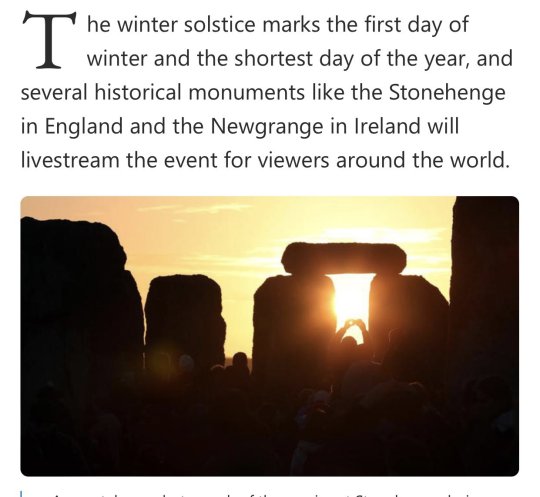
#Stonehenge#Salisbury Plain#Wiltshire#winter solstice#UK#mystical#Druidism#solar calendar#megaliths#shortest day#English countryside#ancient britain#sunrise#prehistoric
10 notes
·
View notes
Text
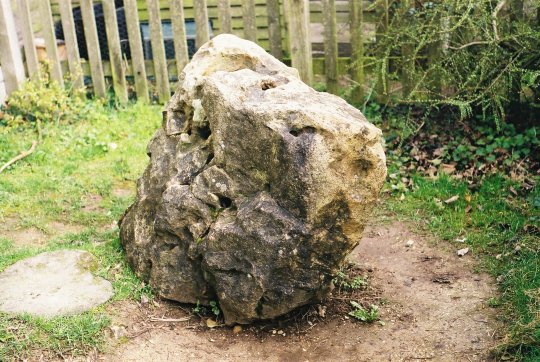
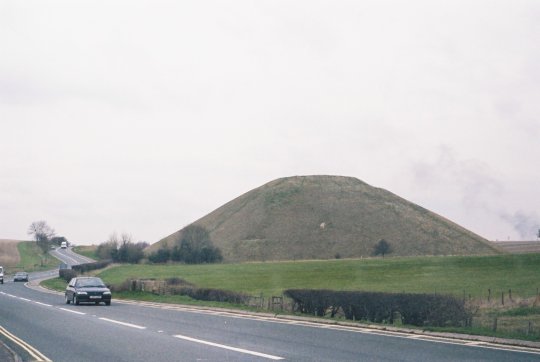














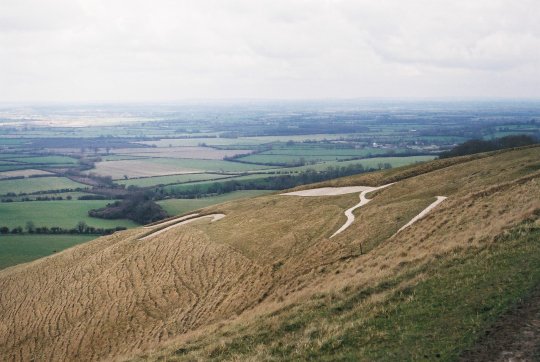


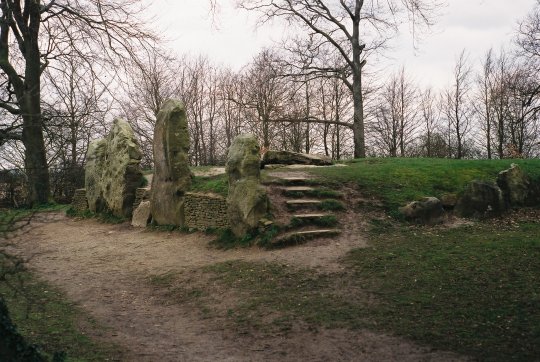


Some film shots from a trip to the Chalk Horse at Uffington, the Ridgeway, Wayland's Smithly Longbarrow, West Kennet Longbarrow, and finally Avebury. This was a university field trip called "Sacred Pagan Sites."
It was probably shot on some 400 speed Fujifilm color stock or another. That was my go-to back then and I've got a roll in the little Vivitar I keep in my purse even now.
This trip was one of the trigger moments I think, that made me want to go look for that village I spent all the rest of my time in the UK looking for. And I discovered years later that I did have a connection to the Salisbury Plain as well though the nature of it eluded me for a long time.
Weirdness aside, it was an excellent day out. Fresh bracing spring air, lovely surroundings, friendly people, and a little dog named Basil who hopped in my lap in a cozy pub we stopped in.
#England#Salisbury plain#stone age#neolithic#pagan#Avebury#wayland's Smithy Longbarrow#ridgeway#Oxfordshire#wiltshire#sehnsucht#saudade
2 notes
·
View notes
Text

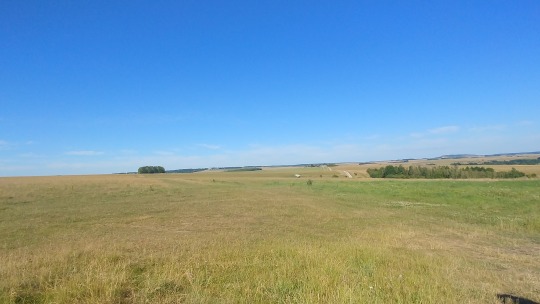
We made it to Salisbury Plain (England, now, not France), where they filmed most of the movie! Officer writeyourownstory was very clever and found us a fellow named James who offered a "Salisbury Safari," or a Local's Tour of the Sights of Salisbury Plain (a la Indianna Jones jeep). He took requests; when we asked for any 1917 filming locations, he happily took us here! That field behind us, by the road? THAT is where they filmed the climactic scene!
According to him, the byway (dirt road) we were on was blocked off at both ends and had a cop there to keep others from just wandering up. The site itself was SWARMING with all kinds of people for months! James also told us it was fun to drive by (on other byways that were out of camerashot, presumably) and watch the clouds of smoke go up for the explosions.
10000000000% worth it if you are ever in Salisbury. Genuinely an amazing experience 💗💗💗
10 notes
·
View notes
Text
12th September
Tip Cat

Tip-Cat Being Played. Sources: A Little Pretty Pocket-Book/ Wikipedia
On this day the Newcastle Wakes in Staffordshire took place. This was a popular fair which included foot races, cake sales, face-pulling through a horse collar (a prize going to the ugliest face pulled) and its favourite game, Tip Cat. Under this rounders/baseball antecedent, a length of wood was set up like a see-saw, with a of wooden ball, known as the Cat, balanced at one end. The other end of the balanced plank was then struck with a bat with the aim of sending the wooden object high in the air. The winners were the batsman who sent the Cat furthest, and the outfield players who most correctly guessed the distance the object travelled. Tip Cat has more recently been revived but is unlikely to replace cricket any time soon.
Today was also the date of the Wilton Great Fair whose highlight was a public brawl between the Salisbury Plain shepherds who beat each other up with crooks, cudgels and fists until only one fighter was left standing and received the accolade King of the Shepherds. This pointless exercise in male violence eventually led to Wilton Fair being suppressed in the nineteenth century. Its modern equivalent markets itself as a family day out with hooliganism most definitely not encouraged.
0 notes
Text
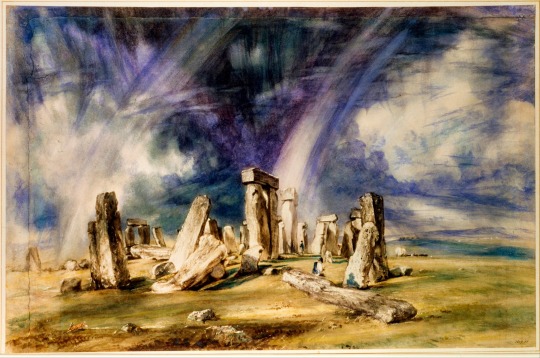
Stonehenge by John Constable
#stonehenge#art#john constable#prehistoric#monument#salisbury plain#wiltshire#england#britain#british isles#stones#neolithic#bronze age#archaeology#europe#european
86 notes
·
View notes